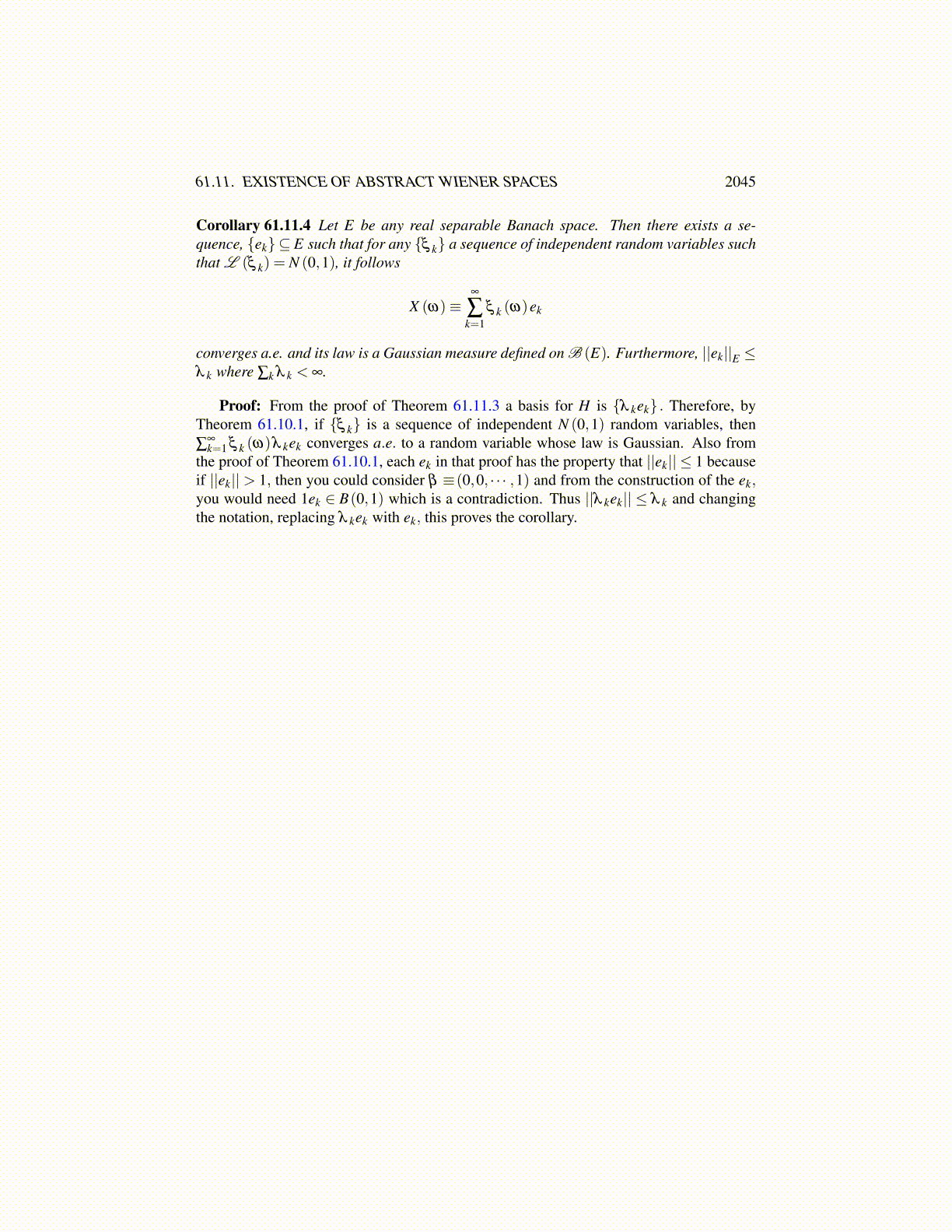
61.11. EXISTENCE OF ABSTRACT WIENER SPACES 2045
this being well defined because the {ek} are independent. Let the norm on H0 be denotedby |·|H0
. Let H1 be the completion of H0 with respect to this norm.I want to show that |·|H0
is stronger than ||·||. Suppose then that∣∣∣∣∣ n
∑k=1
β kek
∣∣∣∣∣H0
≤ 1.
It follows then from the definition of |·|H0that∣∣∣∣∣ n
∑k=1
β kek
∣∣∣∣∣2
H0
=n
∑k=1
β2k ≤ 1
and so from the construction of the ek, it follows that∣∣∣∣∣∣∣∣∣∣ n
∑k=1
β kek
∣∣∣∣∣∣∣∣∣∣< 1
Stated more simply, this has just shown that if h∈H0 then since∣∣∣h/ |h|H0
∣∣∣H0≤ 1, it follows
that||h||/ |h|H0
< 1
and so||h||< |h|H0
.
It follows that the completion of H0 must lie in E because this shows that every Cauchysequence in H0 is a Cauchy sequence in E. Thus H1 embedds continuously into E and isdense in E. Denote its norm by |·|H1
.Now consider the nuclear operator,
A =∞
∑k=1
λ kek⊗ ek
where each λ k > 0 and ∑k λ k < ∞. This operator is clearly one to one. Also it is clear theoperator is Hilbert Schmidt because ∑k λ
2k < ∞. Let
H ≡ AH1.
and for x ∈ H, define|x|H ≡
∣∣A−1x∣∣H1
.
Since each ek is in H it follows that H is dense in E. Note also that H ⊆H1 because A mapsH1 to H1.
Ax≡∞
∑k=1
λ k (x,ek)ek